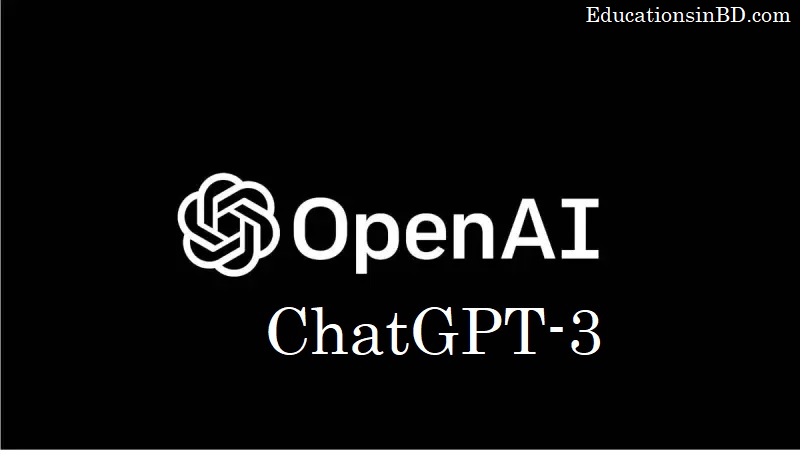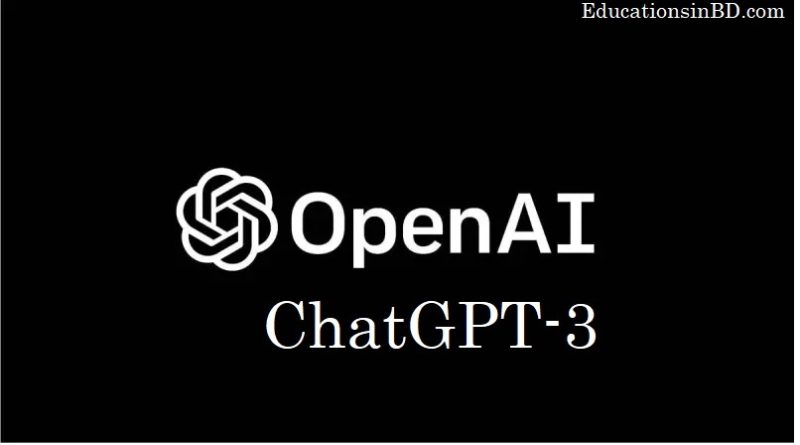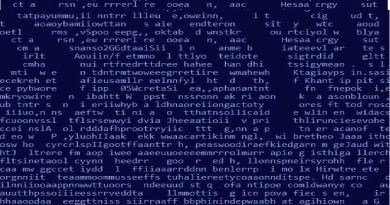Chat GPT login website Link ChatGPT OpenAI – ChatGPT 3
Chat GPT login website Link ChatGPT OpenAI – ChatGPT 3 chat.openai.com. ChatGPT is a language model, so there is no need to log in to use it. You can simply start sending it text input and it will respond with generated text output. If you want to use the API, you will need to sign up for an API key on OpenAI’s website and use that key to authenticate your API requests. In addition to the above, you can also interact with ChatGPT via the OpenAI GPT-3 Playground, which is a web-based interface that allows you to input text and see the model’s output in real-time. You will also need to sign up for an API key to use this feature. Some other ways to use ChatGPT include using one of the many third-party integrations that have been developed, such as in a chatbot, virtual assistant, or other application. The possibilities are endless, and it all depends on your specific use case and how you want to implement the model.
Another way to use OpenAI ChatGPT is to train it on a specific task or dataset to make it more specialized. This is known as fine-tuning. By fine-tuning, you can make it more accurate and more efficient on a specific topic or use case. For example, you can fine-tune the model on customer service data to make it more effective in responding to customer inquiries. This can be done by providing a dataset of example input-output pairs and training the model on it.
It’s also worth noting that there are several pre-trained models available, each with different capabilities, so you can choose the one that best fits your use case. Overall, ChatGPT is a powerful and versatile language model that can be used in a wide variety of ways. Whether you’re looking to create a chatbot, build a virtual assistant, or analyze text data, ChatGPT is a great tool that can help you achieve your goals.
Chat GPT login website Link ChatGPT OpenAI – ChatGPT 3

How do I log into GPT chat?
The process of signing up and logging in to the OpenAI chatGPT website
- Visit the https://chat.openai.com/auth/login website or download the app to your device.
- Click on the “Sign Up” or “Create Account” button.
- Enter your personal information, such as name, email address, and password.
- Verify your email address by clicking on a link sent to your email.
- Complete any additional steps required to set up your account, such as adding a profile picture or payment information.
- To log in to your account, click on the “Login” button and enter your email address and password.
Note: Always follow the instructions provided by OpenAI to sign up and log in to your account.

https://chat.openai.com/chat
Another way to use ChatGPT is to use it in combination with other tools or technologies.
For example, you could use it in conjunction with a natural language processing (NLP) library to extract information from text, or with a machine learning framework to build a predictive model.
You can also use it to generate creative content such as writing articles, poetry, song lyrics, stories, etc. Additionally, you can use it for language translation, summarization, question answering, and more.
The website for OpenAI, the organization that created and trained ChatGPT, is https://openai.com/
In addition to the main website, OpenAI also provides API access to its models, including ChatGPT, through its OpenAI GPT-3 API. You can find more information and documentation on how to use the API at https://beta.openai.com/docs/api-reference/introduction
Also, You can find more information and documentation on how to use the GPT-3 language model and the API on Github https://github.com/openai/gpt-3-docs

It’s also worth noting that OpenAI continues to improve the model, so new capabilities and features are added over time. For example, OpenAI recently introduced the concept of “prompt engineering” which allows users to control the model’s output by providing it with a specific prompt. This makes the model even more flexible and powerful.
In summary, ChatGPT is a powerful and versatile language model that can be used in a wide variety of ways. Whether you’re looking to create a chatbot, build a virtual assistant, analyze text data, or generate creative content, ChatGPT is a great tool that can help you achieve your goals.
How to use OpenAI’s GPT-3? or How to Work OpenAI?
To work with OpenAI, you will need to have some understanding of machine learning and natural language processing. Here is a general overview of the process for working with OpenAI’s models and tools:
Get an API key: To access OpenAI’s pre-trained models and use the OpenAI API, you will need to sign up for an API key. This can be done on the OpenAI website.
Choose a model: OpenAI offers a variety of pre-trained models that you can use for different tasks, such as text generation, language translation, and question-answering.
Make API requests: Once you have your API key, you can use it to make requests to the model and receive the model’s output. You can use the OpenAI API to make requests in a variety of programming languages, such as Python, Node.js, and Ruby.
Fine-tune the model: If the pre-trained model does not give you the desired results, you can fine-tune the model using your own data. This can be done using the OpenAI GPT-3 fine-tuning library.
Train your own model: If you want to train a model from scratch, you can use OpenAI’s platform, which is called OpenAI GPT-3, to train your own model on your own data.
Use OpenAI’s tools: OpenAI provides a number of tools that can be used to make use of GPT-3 and other models or to train models like GPT-3. For example, the OpenAI Playground allows you to interact with GPT-3 and see the results of your input.
Read OpenAI’s documentation: There is a lot of information available on the OpenAI website and in their documentation, which can help you understand how to use the different models and tools.
OpenAI is a research organization that develops and promotes friendly AI in the interest of humanity. The organization has several projects and initiatives that you can work on, including the development of AI models, research in areas such as robotics and natural language processing, and the creation of tools to make AI more accessible to developers and researchers.

To work on OpenAI, you can:
- Visit the OpenAI website and browse through the current job openings and apply to the positions that match your qualifications and interests.
- Participate in the OpenAI community by contributing to open-source projects, participating in hackathons and competitions, or attending events and meetups.
- Collaborate with OpenAI on research by submitting proposals or reaching out to the organization to discuss potential projects.
- It’s also important to note that OpenAI is a for-profit company, you’ll need to have a solid background in the AI field, proven experience, and a good CV.
What is Chat GPT API?
Chat GPT is an API for generating human-like text responses, powered by the OpenAI language model GPT-3 (Generative Pretrained Transformer-3). It allows developers to integrate conversational AI capabilities into their applications, enabling users to interact with the application in natural language.
Chat GPT API allows developers to generate text responses in a wide range of applications, including chatbots, customer service, content generation, and more. It uses the latest advancements in AI and deep learning to generate human-like responses to user input. The API is flexible and can be customized to fit the specific needs of different applications, making it a versatile tool for a wide range of use cases.
Some additional features of Chat GPT API include:
- Contextual understanding: The API is capable of understanding the context of a conversation and generating relevant responses.
- Large-scale training: GPT-3, the language model behind Chat GPT, has been trained on a massive dataset, allowing it to generate high-quality responses.
- Multilingual support: The API supports multiple languages, including English, Spanish, French, and more.
- High accuracy: The API has been trained on a diverse range of text sources, resulting in high accuracy and a wide range of knowledge.
- Easy integration: The API can be easily integrated into different applications via API calls, allowing developers to add conversational AI capabilities to their applications quickly and easily.
Here are some additional features of OpenAI:
- Multi-disciplinary team: OpenAI brings together experts from a variety of fields, including computer science, neuroscience, economics, and psychology, to work on AI research and development.
- Tools and platforms: OpenAI offers a range of tools and platforms for developers and researchers, including OpenAI Gym, a toolkit for developing and comparing reinforcement learning algorithms, and OpenAI GPT-3 Playground, a platform for experimenting with GPT-3.
- AI safety: OpenAI is deeply committed to ensuring the safety and ethical use of AI, and conducts ongoing research into AI safety, such as exploring the potential risks posed by advanced AI systems.
- Open source contributions: OpenAI actively contributes to the open source community, releasing tools, models, and algorithms for others to use and build upon.
Focus on the future: OpenAI is looking beyond current AI capabilities and is working on developing advanced AI technologies that will shape the future. This includes exploring new areas of AI research, such as developing AI systems that can think, reason, and learn like humans.
FAQs about OpenAI:
How does OpenAI ensure AI safety?
OpenAI conducts research and develops technologies aimed at ensuring the safe and beneficial deployment of AI systems. This includes work in areas such as verifying the robustness and reliability of AI systems and ensuring that they operate in alignment with human values and ethics.
Does OpenAI collaborate with other organizations?
Yes, OpenAI collaborates with a range of organizations and institutions in academia, industry, and government to advance AI research and development.
Is OpenAI open-source?
OpenAI has open-sourced some of its tools and technologies, but the majority of its work is proprietary.
Does OpenAI offer AI education and training?
OpenAI does not currently offer formal AI education or training programs. However, they do provide resources and information about AI through their website and blog.
How can I get involved with OpenAI?
There are several ways to get involved with OpenAI, including applying for a job, interning, or partnering with the organization. You can also stay up-to-date on their work and developments by following them on social media or subscribing to their newsletter.
Is OpenAI a non-profit or for-profit organization?
OpenAI is a for-profit organization that operates as a Limited Liability Company (LLC). However, OpenAI has stated that its ultimate goal is to ensure that advanced AI benefits all of humanity, and they have made significant investments in AI research and development aimed at achieving this goal.
How does OpenAI collaborate with other organizations and companies?
OpenAI collaborates with a wide range of organizations and companies, including academic institutions, government agencies, and private companies. OpenAI also has several partnerships and joint research initiatives with other organizations in the AI field.
How does OpenAI make its research and technology available to the public?
OpenAI makes its research and technology available to the public through a variety of channels, including its website, research papers, and open-source software releases. OpenAI also provides access to its AI models through APIs and cloud-based services, allowing developers and researchers to build and experiment with AI applications.
How does OpenAI contribute to the field of AI research?
OpenAI is actively involved in AI research and contributes to the field in a number of ways. The organization conducts original research in areas such as natural language processing, computer vision, and reinforcement learning. OpenAI also collaborates with researchers from other organizations and institutions, and it provides funding and resources for AI research initiatives.
What is OpenAI’s policy on the responsible use of artificial intelligence?
OpenAI has a strong commitment to responsible AI use and has published guidelines for responsible AI development and deployment. The organization believes that AI has the potential to transform society in many positive ways, but it also recognizes the importance of ensuring that AI is developed and used in a way that is safe, ethical, and benefits humanity as a whole.
What is the future direction of OpenAI?
OpenAI has a long-term vision for the future of AI, and the organization is committed to continuing its research and development efforts to advance the field and ensure that AI benefits humanity. OpenAI is also exploring new partnerships and initiatives to expand its impact and reach, and it continues to work with other organizations and institutions to promote responsible AI use and development.
FAQs about ChatGPT:
Can ChatGPT understand the context and maintain a conversation?
Yes, ChatGPT is capable of understanding context and maintaining a conversation, as it has been trained on a large corpus of text data and has learned to generate coherent and relevant responses. However, the quality of the conversation and the ability to maintain context will depend on the input it receives and the task it is being used for.
Is ChatGPT capable of generating multiple responses to a single prompt?
Yes, ChatGPT is capable of generating multiple responses to a single prompt, and it can be set to generate multiple responses by providing different parameters to the API. This allows for greater flexibility and can be useful in a variety of applications, such as generating multiple options for a customer service or support response.
Can ChatGPT generate text in multiple languages?
Yes, ChatGPT is capable of generating text in multiple languages, and OpenAI provides models trained on text data in a variety of languages. The specific languages supported by the model will depend on the version and release of ChatGPT being used.
Is ChatGPT capable of sentiment analysis and emotion recognition?
Yes, ChatGPT is capable of sentiment analysis and emotion recognition to some extent, as it has been trained on text data and has learned to generate text with specific emotions and sentiments. However, the quality and accuracy of the sentiment analysis and emotion recognition will depend on the input it receives and the task it is being used for.
How does the cost of using ChatGPT compare to other AI language models?
The cost of using ChatGPT will depend on a variety of factors, including the specific use case, the amount of data being processed, and the level of support and maintenance required. Compared to other AI language models, ChatGPT may be more expensive, but it also provides more advanced capabilities and higher-quality text generation. It is important to carefully evaluate the specific requirements of the task and compare the costs and benefits of different AI language models to determine the best fit.
Questions and Answers about ChatGPT:
Can ChatGPT generate creative writing?
Yes, ChatGPT can generate creative writing such as poems, short stories, and even songs. However, it’s important to note that the quality of the generated output will depend on the data it was trained on and the quality of the prompt.
Can ChatGPT be used for language translation?
No, ChatGPT is not designed for language translation. There are other AI models and services specifically designed for this task.
Is ChatGPT capable of understanding context and generating appropriate responses?
To some extent, yes. ChatGPT has been trained on a large amount of text data, allowing it to understand the context of a conversation and generate appropriate responses. However, it is not perfect and may sometimes generate responses that are off-topic or inappropriate.
Can ChatGPT generate responses in different languages?
Yes, OpenAI has trained multiple language models, including ChatGPT-3, in different languages such as English, Spanish, French, German, and Chinese.
Is ChatGPT open source?
No, ChatGPT is not open source. OpenAI provides API access to the model through a paid subscription service. However, the architecture and training method of ChatGPT are published in research papers and are open to the academic community.




Pingback: Chat GPT Login ChatGPT Website OpenAI Sign Up 2023 ChatGPT 3 Chat.openai.com - EducationsinBD
Pingback: Chat GPT Alternative For Coding , Open-source Free Online Website - EducationsinBD